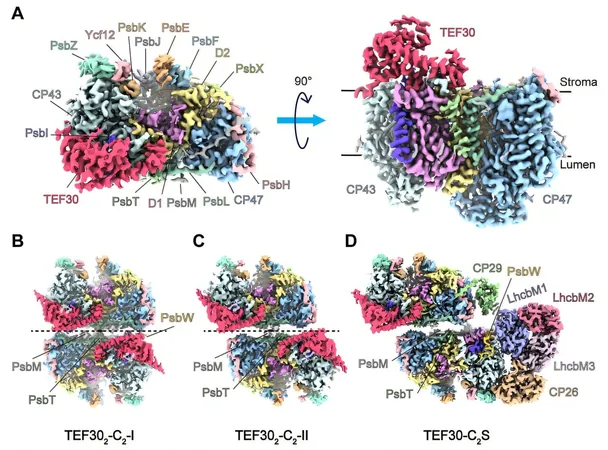
NASA's Groundbreaking Hybrid System Set to Revolutionize Spacecraft Measurements
2025-06-17
Author: Michael
A New Era in Space Magnetic Field Measurement
A pioneering team backed by NASA is shaking up the way we observe magnetic fields in space with a revolutionary hybrid system. This ingenious setup not only measures magnetic fields but also serves as an attitude control mechanism for spacecraft, making it a game changer in aerospace technology.
Imagine a system that is not only compact and lightweight but can be integrated directly onto small spacecraft without needing cumbersome boom structures. This breakthrough could significantly reduce costs and open the door for smaller missions to gather crucial data on Earth's magnetic field.
Unlocking the Secrets of Solar Storms and Auroras
Solar storms pose significant threats to our satellites and can disrupt communication and power systems on Earth. Thankfully, our planet is shielded by its magnetic field, which channels harmful solar energy towards the poles, creating stunning auroras. However, the delicate features within these auroras are often neglected due to the challenges of traditional measurement methods.
The Innovative HyMag-ADCS
Enter the HyMag-ADCS—a cutting-edge hybrid magnetometer and attitude control system being developed at the University of Michigan. This new configuration seamlessly combines direct current (DC) and alternating current (AC) magnetic measurements, integrated into a single device that takes up as little space as possible.
Unlike traditional magnetometers that require long booms to minimize interference from the spacecraft itself, the HyMag-ADCS employs advanced technology including machine learning and specialized electronics to get accurate readings without added structures.
A Look Inside the Technology
The heart of the HyMag-ADCS system features the Quad-Mag DC magnetometer, which uses four sensors to enhance sensitivity. This allows for more precise readings crucial for understanding not just the magnetic environment but also the spacecraft’s orientation.
Additionally, the system utilizes dual-purpose electromagnetic rods capable of both controlling spacecraft orientation and performing scientific measurements. This innovative approach means the same components work for multiple purposes, significantly enhancing efficiency.
Artificial Intelligence Meets Aerospace
Machine learning is taking center stage in noise reduction for this project. The team is employing advanced algorithms designed to autonomously filter out spacecraft-generated noise, paving the way for clearer, more reliable scientific data.
A Project with Purpose and Promise
Currently in the early stages of development, the HyMag-ADCS represents a blend of academic rigor and practical application, primarily executed by enthusiastic undergraduate and graduate students eager to contribute to the next generation of aerospace innovations.
As this project unfolds, it promises not only to transform how we study Earth's magnetic environment but also to enhance our understanding of space weather, ultimately safeguarding our technological assets and advancing planetary science.









 Brasil (PT)
Brasil (PT)
 Canada (EN)
Canada (EN)
 Chile (ES)
Chile (ES)
 Česko (CS)
Česko (CS)
 대한민국 (KO)
대한민국 (KO)
 España (ES)
España (ES)
 France (FR)
France (FR)
 Hong Kong (EN)
Hong Kong (EN)
 Italia (IT)
Italia (IT)
 日本 (JA)
日本 (JA)
 Magyarország (HU)
Magyarország (HU)
 Norge (NO)
Norge (NO)
 Polska (PL)
Polska (PL)
 Schweiz (DE)
Schweiz (DE)
 Singapore (EN)
Singapore (EN)
 Sverige (SV)
Sverige (SV)
 Suomi (FI)
Suomi (FI)
 Türkiye (TR)
Türkiye (TR)
 الإمارات العربية المتحدة (AR)
الإمارات العربية المتحدة (AR)